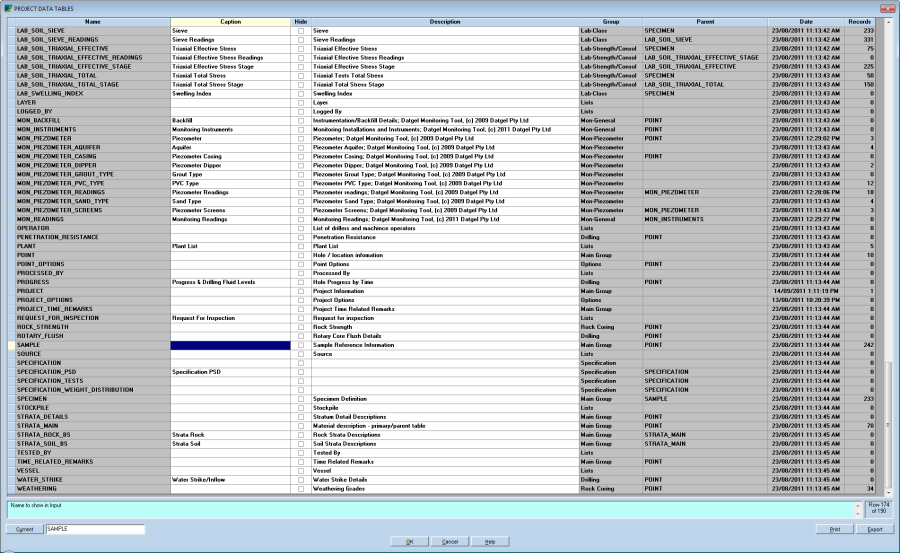Check 2 - Data Completeness Groups
Introduction
The data completeness groups check ensures that for all data displayed on the paper or PDF report, there is a relevant Group or Groups in the electronic file. For example, if SPT test results can be seen on the log, then there must be a Group called "ISPT", relevant ISPT Headings and relevant test results in the electronic file.
Procedure
Because we are comparing a paper report to electronic data, it is not possible to carry out these checks automatically. Therefore, the checker must manually spot omissions in the electronic file.
gINT INPUT Table Lists
To assist in performing this check, open up the AGS 3.1 (SG) project file in gINT. You can display a grid listing the group names, type, description and other info in INPUT by going to Tables > List, or by pressing Ctrl + F8.
In this screen, you can sort the columns alphabetically in ascending or descending order by clicking on the titles. You can export this list to Excel, or print this list if you wish. As it is sometimes not obvious what the Group is used for by just looking at the name, this spread sheet can be used as a quick reference to assist you for this check, and for the other checks. Further, you can double click on a table name and gINT will open that table.
AGS Checker Log Statistics
Open the AGS Checker log and scroll towards the end of the log, until you reach a section called DATA STATISTICS.
The data statistics of interest are:
- Number of records in each group with data
- Groups with no data or standard AGS Groups missing from file
For every column on the paper log that has data, check if the relevant Group for the data presented is in the first list (Number of records in each group with data). For example, if there is a column on the paper log containing SPT results, there should be a group called ISPT in the first list in the AGS Checker. If the group is listed in the first list, then the column passes the test. If the group is not listed in the first list, but is listed on the second list (Groups with no data or standard AGS groups missing from file), then the data is missing from the electronic file. You can also check that the number of records found in the log is consistent to the number of records in the paper log.
If any of the groups are missing, or there are any discrepancies, the AGS Checker log should be sent to the Data Generator.

